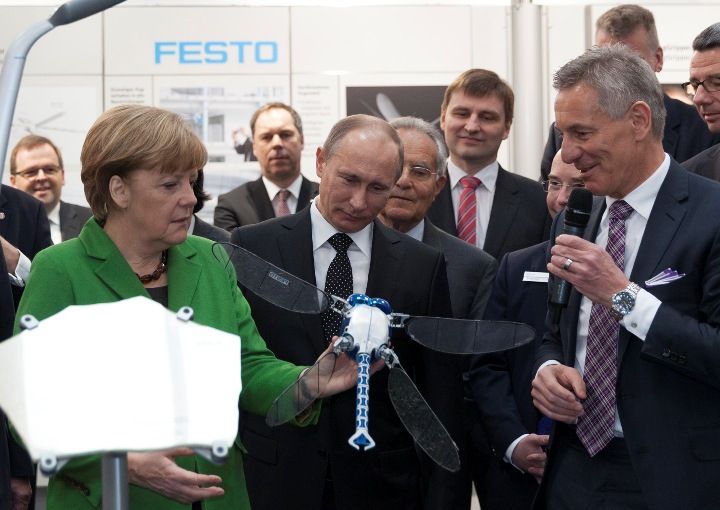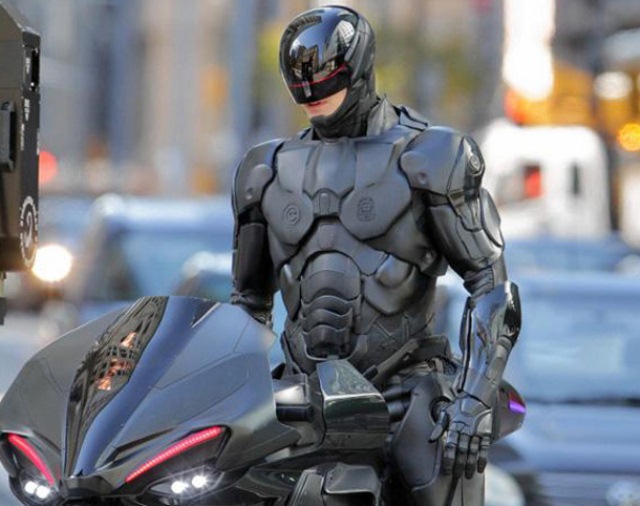Robot Elephant trunk acquires working
From the moment when the man began to acquire technology, he has a need for hoisting mechanisms. Including those that are able to move over rough terrain and make handling loads of varying weights and dimensions, preferably with high accuracy. And one of these mechanisms appeared elephant: a smart and strong Hathi of “The Jungle Book” by Rudyard Kipling firmly entrenched in commercial mythology. Well, now working to acquire the trunk and robots.
Was sometime around 3300-1300 years BC. e., before the invasion of the Aryans in the Indus Valley civilization mighty. Now her name or Harappan India. Dwelt in its cities, the largest of which is considered Harappa, Lothal and Mohenjo-Daro, about five million people. Well territory covered by the Indus Valley Civilization, was much higher than those that were controlled by her “peers” – Egypt and Sumer.
British archaeologists who started to dig her city in the late nineteenth – early twentieth century, there have found many interesting things. Developed irrigation system, providing the needs of agriculture, urban water supply and sanitation; public toilets, two-storey houses; powerful fortifications … This infrastructure has required a large amount of construction work, which at all times is inevitably associated with the movement of large masses and volumes of cargo.
And to facilitate the hoisting works Indus Valley residents went through the most original, unique for the great ancient civilizations, as well as for the present. There began to tame and train the work of Indian elephants (Elephas maximus), the sole survivor of the once-diverse species kind of Asian elephants (Elephas). The uniqueness of the elephant, among other animals is that he is not just transport, but also the handling agent at plantigrade platform which is placed quite universal manipulator – trunk.
Indian elephants (Elephas maximus) and now work for the benefit of man.
Elephant – that’s about as modern four-wheel drive truck with cargo boom, the beloved current collectors panel houses. Only better: he stopohodyasch, but it can take on the most rugged terrain. And capable as cellular automata von Neumann replicate. The Trucks something – do not multiply and regenerate itself, their factory produces. They need parts. And these elephants no restrictions: Indus civilization collapsed, covered with sediment field, dragged her city forests and elephants continued to serve the residents of forest villages.
And were so successful that it made an impression on even the Europeans first era of the industrial revolution and imperialism. Belgian King Leopold II, one of the most ruthless colonial rulers, whose activities are terrified contemporaries and admires current liberals tried to put to the case useless roaming African elephants (Loxodonta) and arranged for this purpose in 1899, the Centre Cyrus Woong-turned domestication of elephants. These works lasted until 1932, when imperialism began to give way to fascism – and was not up to the patriarchal fun.
Well, now for example elephants turning engineers (” Bringing bionics? “). Tell the audience again “Computerra” about plantigrade machines manufacturer which acquired Google, there is no need, we talked about it in detail (” Stopohody future, or why Google bought Boston Dynamics “). And “soft”, flexible plastic and pnevmopolostey manipulators we have described. (” Why soft robot needs a high IQ, a physical therapist to work? “) And now in sight designers got such a thing as an elephant’s trunk.
Engaged in copying the working tool Hatha engineers from the German company Festo , well-known manufacturer of industrial (especially air) automation. They in the program Bionic Learning Network , aimed at cooperation with universities and familiarity with the methods of the future experts of bionics, and created a few years ago, the first prototype of a ‘robot hobotatogo “, which is widely demonstrated to the public , including hand harvesting kantslerin Frau Merkel in PR Germans strong ever since the gryunderstva!

Festo can energetically promoting, demonstrating their robostrekoz Summit.
But initial robot arm was only technology demonstrator, the evidence of concept. A practical obstacle to its use was the complexity of programming and management. We have been told that a multi-link design with lots of flexible units, having a large number of degrees of freedom requires a very large amount of computation to control it. (” Why soft robot needs a high IQ, a physical therapist to work? “) And it involves more complex programming.
But now the “trunk” from Festo intensively brought to the stage of practical use. Primarily due to the fact that used a new approach to its programming, which can be called self-learning . The fact that the robot is now not so much programmed in advance how many forms required for an array of data in the process of adaptation to the world. Approximately the same as the world adapts to this child.
Thus, the robot from Festo, which you can see in this video , is one of the most interesting experimental devices revolution “smart” machines. First of all – technology. It mostly consists of segments printed on the 3D-printer. This, of course, not yet self-reproduction, but then the 3D-printer to a large degree can now be printed at the 3D-printer … Not even life, of course, and not even kvazizhizn, but a small step to it in the field of technology.
In effect, this “trunk” provides pneumatic muscles – that, on the one hand, it provides unparalleled flexibility, and on the other – makes the task of managing them is much more complex than the current “hard” industrial robots, four shestishpindelnyh. So you need to control the trunk in a much more multi-dimensional function space than a firm hand. And so Johan Style (Jochen Steil) engineer quicly from University of Bielefeld in the German state of North Rhine – Westphalia, went the other way.
He teaches “trunk” about the same as learning to crawl and then walk the child, as it forms the motor skills. Process called target babble («goal babbling») – in imitation of that trial and error method, which is used by a child. Is in motion, he stumbles, falls, moving differently, remembers the position of the muscles in the successful motion. Similarly, “trunk” remembers the state of valves and air modes, actuating its pneumatic “muscles”.
Self-learning allows pnevmomyshts “trunk” to make the most accurate movement.
This is done first for the individual, relatively simple movements (like Lem in “Solaris” copied Ocean giant baby makes movements separate muscle groups). Then these movements memorized classified, summarized in the group. From them, you can choose what you need for precise movements commit greater and greater complexity. Say – screw a light bulb or torn with hazel hazelnut.
So we see how in one device came together several modern technologies – robotics, 3D-printed, self-machine procedural skills. While this is still trapped inside the lab and describes scientific and popular publications, but in the coming years will have a wonderful chance to penetrate into the factory workshops and warehouses transport and distribution companies, once again changing the world.




